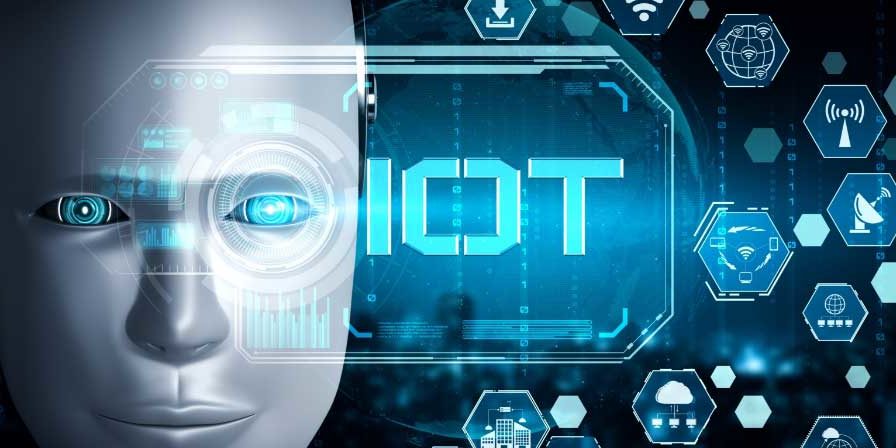The world of the Internet of Things (IoT) is evolving at a breakneck pace, with new developments and advancements emerging regularly. For exporters and importers, understanding these emerging trends in IoT hardware is essential to remain competitive and innovative in the market. In this article, we’ll explore the latest trends that are shaping the future of IoT hardware and how businesses can leverage these advancements to their advantage.

The Rise of Edge Computing in IoT
One of the most significant trends in IoT hardware is the adoption of edge computing. This technology allows data processing to occur closer to the source of data generation, reducing latency and improving response times. For businesses, this means faster decision-making and enhanced operational efficiency. Edge computing is particularly beneficial for applications requiring real-time data processing, such as autonomous vehicles and smart manufacturing.
Advancements in Sensor Technology
Sensors are the backbone of IoT systems, collecting data from the environment and transmitting it for analysis. Recent advancements in sensor technology have led to the development of more accurate, reliable, and energy-efficient sensors. These improvements are driving the adoption of IoT in various industries, including healthcare, agriculture, and environmental monitoring. With more sophisticated sensors, businesses can gather precise data, leading to better insights and decision-making.
Integration with AI and Machine Learning
The integration of IoT hardware with artificial intelligence (AI) and machine learning is another trend transforming the industry. By leveraging AI, IoT devices can analyze data more effectively, identify patterns, and make predictions. This capability is particularly useful for predictive maintenance, where businesses can anticipate equipment failures and perform maintenance proactively, reducing downtime and costs.
Enhanced Security Measures
As the number of connected devices grows, so does the risk of cyber threats. Ensuring the security of IoT systems is a top priority for businesses. New security measures, such as blockchain technology and advanced encryption methods, are being integrated into IoT hardware to protect data and ensure privacy. Businesses must stay informed about these security advancements to safeguard their operations and customer data.
Interoperability and Standardization
Interoperability remains a challenge in the IoT landscape, with different devices and systems struggling to communicate effectively. Efforts to standardize protocols and communication methods are underway, aiming to create a more cohesive and functional ecosystem. For businesses, understanding and adapting to these standards is crucial for seamless integration and operation of IoT systems. Learn more about interoperability challenges in IoT from this source.
IoT Hardware Miniaturization
As technology advances, IoT hardware is becoming smaller and more compact. This miniaturization allows devices to be integrated into a wider range of products and applications. For example, wearable devices and smart home products benefit from smaller, more efficient hardware. This trend is opening new opportunities for businesses to innovate and reach new markets.
Environmental Monitoring
IoT hardware is increasingly being used for environmental monitoring, providing valuable data for sustainability efforts and regulatory compliance. Businesses can leverage IoT devices to track environmental parameters, such as air quality and water levels, and make informed decisions to minimize their environmental impact. To dive deeper into environmental monitoring with IoT devices, check out this link.
Energy Efficiency and Power Management
Energy efficiency is a critical consideration in IoT hardware development. As devices become more powerful and capable, optimizing power consumption is essential to prolong battery life and reduce energy costs. Innovations in power management, such as energy harvesting and low-power communication protocols, are enabling devices to operate efficiently without compromising performance.
Over-the-Air Updates
Over-the-air (OTA) updates have become a standard feature in IoT hardware, allowing devices to receive software updates remotely. This capability ensures that devices remain secure and up-to-date without requiring physical access. OTA updates are particularly beneficial for businesses with large fleets of devices, streamlining maintenance and reducing operational costs. For insights into OTA configuration for IoT, visit this resource.
IoT Gateways and Protocols
IoT gateways play a crucial role in connecting devices to the cloud and facilitating communication between different protocols. As the IoT ecosystem expands, the demand for robust and versatile gateways is growing. Businesses must select gateways that support a wide range of protocols and can handle the increasing volume of data generated by IoT devices. To explore gateway design principles, refer to this guide.
Version Control for IoT Firmware
Managing firmware versions is essential for maintaining the functionality and security of IoT devices. Version control systems enable businesses to track changes, roll back updates if necessary, and ensure consistency across devices. Implementing robust version control practices is vital for minimizing disruptions and ensuring reliable device performance. For more information on version control for IoT firmware, explore this article.
Future Prospects and Challenges
The future of IoT hardware is promising, with ongoing advancements and innovations on the horizon. However, businesses must also be prepared to address challenges such as scalability, data privacy, and regulatory compliance. By staying informed about the latest trends and developments, exporters and importers can navigate the evolving IoT landscape and capitalize on emerging opportunities.
For a broader perspective on IoT product development, consider exploring external resources like this article.

FAQ
What is edge computing in IoT?
Edge computing is a technology that processes data closer to the source of data generation, reducing latency and improving response times. It is particularly beneficial for applications requiring real-time data processing.
How does AI enhance IoT devices?
AI enables IoT devices to analyze data more effectively, identify patterns, and make predictions, which is useful for applications like predictive maintenance.
Why is interoperability important in IoT?
Interoperability ensures that different devices and systems can communicate effectively, creating a more cohesive and functional IoT ecosystem.


